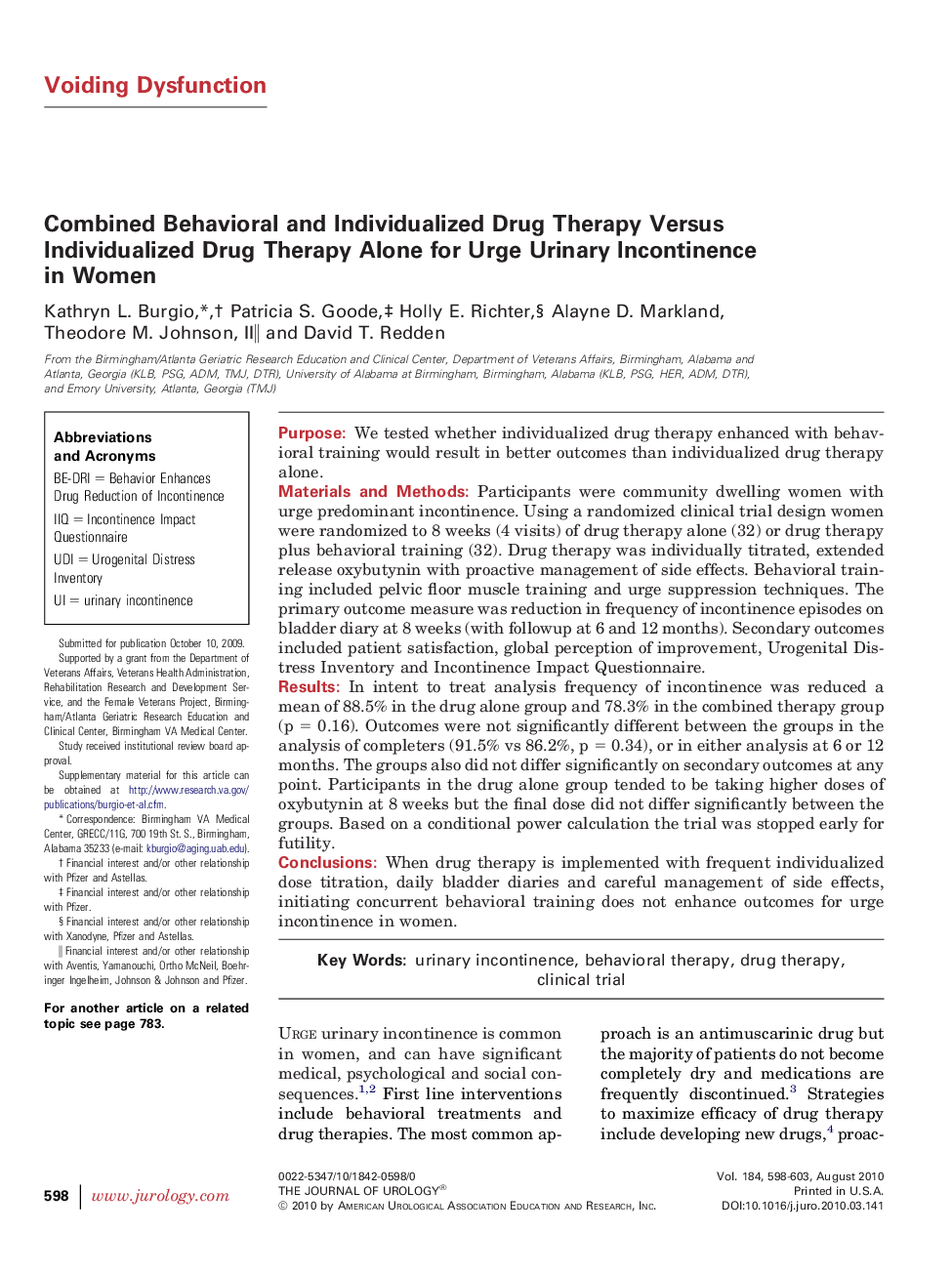| Article ID | Journal | Published Year | Pages | File Type |
|---|---|---|---|---|
| 3869451 | The Journal of Urology | 2010 | 6 Pages |
PurposeWe tested whether individualized drug therapy enhanced with behavioral training would result in better outcomes than individualized drug therapy alone.Materials and MethodsParticipants were community dwelling women with urge predominant incontinence. Using a randomized clinical trial design women were randomized to 8 weeks (4 visits) of drug therapy alone (32) or drug therapy plus behavioral training (32). Drug therapy was individually titrated, extended release oxybutynin with proactive management of side effects. Behavioral training included pelvic floor muscle training and urge suppression techniques. The primary outcome measure was reduction in frequency of incontinence episodes on bladder diary at 8 weeks (with followup at 6 and 12 months). Secondary outcomes included patient satisfaction, global perception of improvement, Urogenital Distress Inventory and Incontinence Impact Questionnaire.ResultsIn intent to treat analysis frequency of incontinence was reduced a mean of 88.5% in the drug alone group and 78.3% in the combined therapy group (p = 0.16). Outcomes were not significantly different between the groups in the analysis of completers (91.5% vs 86.2%, p = 0.34), or in either analysis at 6 or 12 months. The groups also did not differ significantly on secondary outcomes at any point. Participants in the drug alone group tended to be taking higher doses of oxybutynin at 8 weeks but the final dose did not differ significantly between the groups. Based on a conditional power calculation the trial was stopped early for futility.ConclusionsWhen drug therapy is implemented with frequent individualized dose titration, daily bladder diaries and careful management of side effects, initiating concurrent behavioral training does not enhance outcomes for urge incontinence in women.
